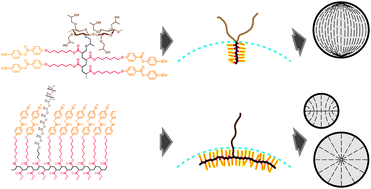Control of mesogen configuration in colloids of liquid crystalline polymers†
Abstract
We report on a method to chemically predetermine the surface anchoring of mesogens in liquid crystalline colloids formed by different types of

* Corresponding authors
a Institute of Organic Chemistry, Johannes Gutenberg-University, Duesbergweg 10-14, Mainz, Germany
b Group Theory of Polymers and Soft Matter, Department of Applied Physics, Technische Universiteit Eindhoven, P.O. Box 513, Eindhoven, The Netherlands
We report on a method to chemically predetermine the surface anchoring of mesogens in liquid crystalline colloids formed by different types of

 Please wait while we load your content...
Something went wrong. Try again?
Please wait while we load your content...
Something went wrong. Try again?
S. Haseloh, P. van der Schoot and R. Zentel, Soft Matter, 2010, 6, 4112 DOI: 10.1039/C0SM00125B
To request permission to reproduce material from this article, please go to the Copyright Clearance Center request page.
If you are an author contributing to an RSC publication, you do not need to request permission provided correct acknowledgement is given.
If you are the author of this article, you do not need to request permission to reproduce figures and diagrams provided correct acknowledgement is given. If you want to reproduce the whole article in a third-party publication (excluding your thesis/dissertation for which permission is not required) please go to the Copyright Clearance Center request page.
Read more about how to correctly acknowledge RSC content.
 Fetching data from CrossRef.
Fetching data from CrossRef.
This may take some time to load.
Loading related content
